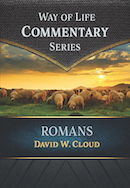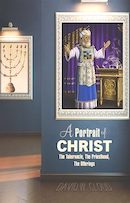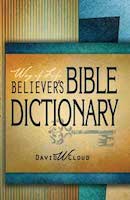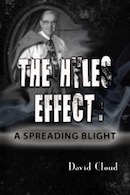866-295-4143, fbns@wayoflife.org
William Tyndale was not able to complete the entire Old Testament before he was put to death by the Catholic Church in 1536. He completed Genesis through 2 Chronicles, plus Jonah, which is 15 of the 39 books. After his death the translation of the Old Testament was finished by other men and the entire Tyndale Bible was published in several editions, primarily the Coverdale Bible, the Matthew’s Bible, the Bishops Bible, the Geneva Bible, the Great Bible, and the King James Bible of 1611.
Following is a study of the major editions of the Tyndale Bible between the time of Tyndale and the King James Bible.
THE COVERDALE BIBLE (1535)
Cambridge educated, Miles Coverdale (1488-1569) had been an Augustinian friar, but he was converted through reading the Scriptures and left the priesthood. He fell in love with the Bible and later wrote, “Wherever the Scripture is known it reformeth all things. And why? Because it is given by the inspiration of God.”
Like Tyndale, Coverdale was forced to flee England for the relative safety of certain cities on the European continent. He did this in 1528 and spent some time working with Tyndale in Hamburg. He also helped proofread the Tyndale manuscripts as they went to press in Antwerp before Tyndale’s arrest.
The Coverdale Bible first appeared in England in 1536, shortly after Tyndale’s death. It used Tyndale’s New Testament and all of the Old Testament portions that Tyndale had completed. The rest of the Old Testament was translated from German and Latin by Coverdale.
It was printed in Europe in late 1535 and and shipped to England for distribution. The title page said: “BIBLIA. THE BIBLE, that is the holy Scripture of the Olde and New Testament, faithfully and truly translated out of Douche and Latyn in to Englishe, 1535.” It was dedicated to King Henry VIII and “his dearest just wife, and most vertuous pryncesse, QUEEN ANNE.” When Anne Boleyn was put to death in May 1536, the dedication in the Coverdale Bible became an obstacle to its distribution in England. Some copies were therefore modified. Christopher Anderson says that some were changed to “Jane” and in other copies the name of the queen has been removed entirely. Some replaced the title page with a new one that changed the year to 1536 and removed the words “translated out of Douche and Latyn.”
The difference in spiritual character between William Tyndale and Miles Coverdale is testified by the flattering dedication that Coverdale made to King Henry VIII. He compares the wicked king to Moses, David, Jehoshaphat, Hezekiah, and Josias and says: “I thought it my duty, and to belong unto my allegiance, when I had translated this Bible, not only to dedicate this translation unto your Highness, but wholly to commit it unto the same: to the intent that if any thing therein be translated amiss, it may stand in your Grace's hands, to correct it, to amend it, to improve, yea, and CLEAN TO REJECT IT, if your godly wisdom shall think it necessary!” In contrast, Tyndale always spoke the plain truth to the king and when he gave a specially printed copy of his New Testament to Queen Anne Boleyn to honor her for her assistance to the persecuted brethren it contained no dedication.
THE MATTHEW’S BIBLE (1537)
The Matthew’s Bible was published in 1537 and was so called because “Thomas Matthew” appears on the title page. This was a pen name for John Rogers (1500-1555).
Cambridge educated, Rogers moved to Antwerp while Tyndale was there to become a chaplain to the English merchantment. Christopher Anderson tells us that it was Tyndale who influenced Rogers to examine the Scriptures, which led to his rejection of Roman dogma.
For the Matthew’s Bible, Rogers used the Tyndale New Testament and those portions of the Old Testament that Tyndale had completed (Genesis to 2 Chronicles and Jonah). For the rest of the Old Testament he possibly revised the Coverdale or translated directly from Hebrew.
While Tyndale’s was imprisoned, he was in communication with John Rogers, and when Tyndae was put to death in 1536, Rogers received the manuscripts Tyndale had completed on the Old Testament books and began the work of completing the translation and having it printed.
The printing was done in Europe and when it was about half finished, two London printers joined the project and completed it. These were Richard Grafton and Edward Whitchurch. They carried on the printing beginning with Isaiah. At that point the page numbering begins anew and the new section begins with a title page containing “The prophetes in Englishe” in black and red letters, surrounded by sixteen woodcuts. On the next page the letters “R.G.” appear at the top and the letters “E.W.” at the bottom, with a large woodcut between. These are the initials of the printers.
Grafton was later incarcerated in Fleet prison and required to post a large bond promising that he would not print or sell any more Bibles until the king and the bishops could agree on a translation, something they never did!
The Matthew’s Bible was intended for serious study.
It had a collection of biblical passages constituting “An Exhortation to the Study of the Holy Scripture.” The initials “J.R.” appear at the end, indicating that this was the work of John Rogers.
It had a summary of Bible doctrine adapted from Jacques Lefevre’s French Bible of 1534.
It also had an alphabetic concordance to Bible subjects, translated from Pierre Robert Olivetan’s French Bible of 1535.
On February 4, 1555, John Rogers followed his friend Tyndale into the flames and gave his life for his testimony for Christ. Rogers had a large family; at the time of his imprisonment in Newgate he had ten children, one a nursing baby. His pitiful request that his wife be allowed to visit him was cruelly denied by the ecclesiastical authorities. He did not see her or the children until he was on the way to his execution at Smithfield. Not allowed even to stop and bid his family farewell, he walked calmly to the stake, repeating the 51st Psalm. “An immense crowd lined the street, and filled every available spot in Smithfield. Up to that day men could not tell how English Reformers would behave in the face of death, and could hardly believe that Prebendaries and Dignitaries would actually give their bodies to be burned for their religion. But when they saw John Rogers, the first martyr, walking steadily and unflinchingly into a fiery grave, the enthusiasm of the crowd knew no bounds. They rent the air with thunders of applause. Even Noailles, the French Ambassador, wrote home a description of the scene, and said that Rogers went to death ‘as if he was walking to his wedding.’ By God’s great mercy he died with comparative ease. And so the first Marian martyr passed away” (J.C. Ryle, Why Were Our Reformers Burned?).
THE GREAT BIBLE (1939)
The Great Bible was published in 1539 and was an edition of the Matthews Bible.
Miles Coverdale oversaw the completion and printing of the first Great Bible, but there were several editions that were printed by other parties. Christopher Anderson in the Annals of the English Bible mentions five or six editions that appeared by 1540 and four more in 1541.
This Bible was persecuted by Roman authorities from its inception.
The printing began in Paris in 1538. Coverdale wrote that the work was “daily threatened.” The license they obtained for the printing had a provision that warned that the project had to conform to inquisition laws. Before the printing could be finished, the Romanist French ambassador to England learned of the project and wrote to French authorities, suggesting that it be destroyed.
Being warned of impending trouble, Coverdale and his workers labored diligently to ship the portions that had already been printed to England. Coverdale wrote, “If these men proceed in their cruelness against us, and confiscate the rest yet this at the least may be safe.”
Four days later the Roman Catholic Inquisitor-general for France demanded that the printing cease and called for any completed sheets to be removed. The feared Roman Catholic inquisitors descended upon the printing facility, seized the sheets which had not already been shipped to Britain, amounting to, some say, 2500 Bibles, and ordered them burned.
Bible translator Miles Coverdale and his friend Grafton, who had been overseeing the printing, had to flee from Paris to avoid persecution.
Later, through diplomatic negotiations, they were able to return to Paris and recover the printing presses and type. Some historians also tell us that, by God’s grace, they were able to recover even many of the condemned sheets. Instead of burning these sheets, the authorities had sold them for waste paper, and the men who had purchased them were more than willing to sell them back to Coverdale!
The first printing of the Great Bible was completed in April 1539.
It was called “great” because of its large size. It was published in six volumes, each measuring 16.5 X 11 inches.
Copies were placed in all of the churches of England upon royal authority. Cromwell “ordered that … a copy of the Great should be placed in every parish church in England. … Thus it came about that Tyndale’s Bible was circulated extensively for many years in the name of others, and with the king’s formal authorization, and became the basis for subsequent translations” (Simms, Bible from the Beginning, p. 178).
The Great Bible also attained the name The Chained Bible, because copies were often chained to reading desks that were attached to a pillar in the church. This was to discourage theft.
THE GENEVA BIBLE (1560)
The Geneva Bible was produced by English refugees who settled in Geneva to escape the persecutions of the Roman Catholic Queen Mary, who in England reigned from 1553 to 1558.
Geneva was a bastion of Bible text and translation activity.
In 1535 Robert Olivetan’s French translation was published in Geneva. Financial support for the printing had come from Waldensian churches in northern Italy (Daniel Lortch, Histoire de la Bible Francaise [History of the French Bible], p. 105; from an English translation appearing in Documentation on the Olivetan-Ostervald Bible by Curtis Gibson, p. 2).
In 1556 the Spanish Bible translated by Juan Perez de Pineda was published in Geneva.
Geneva was the home of Theodore Beza, one of the prominent Biblical scholars of the day and an editor of the Greek Received New Testament. Beza, who took John Calvin’s place in Geneva in 1564, published editions of the Received Text in 1565, 1582, 1588-9, and 1598.
The Geneva Bible in English was chiefly the work of William Whittingham, who married Catharine Chauvin, the sister of John Calvin. He was a graduate of Oxford and had traveled widely in Europe. He moved to Geneva in 1555, a little over a year after Queen Mary took the throne, and he became the pastor of the English congregation of about 100 members. The expense of the Geneva English translation project was defrayed by the wealthier members of this congregation.
Aided by two other English exiles, Anthony Golby and Thomas Samson, Whittingham completed the revision of the entire Tyndale Bible in April 1560.
Golby was educated at Cambridge and skilled in Latin, Greek, and Hebrew. He was noted “for a flaming zeal against the errors and abominations of papistry, and all the remnants and patches of it retained in Church of England” (Alexander McClure, Translators Revived: Biographical Notes of the KJV Translators, c. 1850).
Samson (1517-1589) was Oxford educated and “was a stout Protestant and puritan, and a very great scholar” (McClure). After he returned to England he became Dean of Christ Church in Oxford and was considered was of the greatest linguists in the nation. He was arrested in 1564 under Queen Elizabeth and charged with non-conformity.
Whittingham returned to England upon the publication of the Geneva Bible and was the author of several metrical versions of the Psalms that are still sung in Anglican congregations.
The Geneva New Testament was published in 1557; the entire Bible in 1560.
The Geneva Bible was often printed in small sizes that were convenient for missionary use.
It contained many explanatory notes that condemned Roman Catholicism and taught Protestant doctrines. These notes are still published today.
It was the first entire English Bible to contain verse divisions throughout. Before this, the English Bibles had been divided into chapters and paragraphs. In the verse divisions, the Geneva translators followed the Stephanus’ Latin Bible of 1555, which was the first entire Bible in any language to contain verse divisions.
The Geneva quickly became the most popular English Bible and wielded a powerful influence for almost 100 years, until its popularity waned in favor of the King James Version.
The Geneva was the Bible carried to America by the first settlers from England in the 17th century.
It continued to be printed in England until 1617.
THE BISHOPS’ BIBLE (1568)
The Bishops’ Bible was produced in 1568 during the reign of Queen Elizabeth I, who followed Bloody Mary and established the Church of England on a Protestant footing.
The Church of England wanted a Bible to compete with the popular Geneva Bible and one that could replace the Great Bible.
Matthew Parker, the Archbishop of Canterbury, oversaw the production of the Bishops’ Bible. It was so called because most of those who worked on it were Anglican bishops.
The Bishops Bible was translated by men who were persecuted for their faith. Consider two examples:
Dr. Thomas Bentham had been Fellow of Magdalen College in Oxford, a very prestigious position. He was ejected from this position during Queen Mary’s reign and was forced to flee to Europe, where he became a preacher at Zurich and Basle.
Dr. Edmund Grindall was also educated at Magdalen College and was persecuted under the reign of Queen Mary.
The Bishops Bible was never very popular, and the Geneva Bible continued to be the people’s Bible until the publication of the King James. Between 1568 and 1611, there were only 20 editions of the Bishops Bible, whereas there were 120 of the Geneva.
copyright 2013, Way of Life Literature
- Receive these reports by email
- "About" David Cloud
- www.wayoflife.org
______________________
Sharing Policy: Much of our material is available for free, such as the hundreds of articles at the Way of Life web site. Other items we sell to help fund our expensive literature and foreign church planting ministries. Way of Life's content falls into two categories: sharable and non-sharable. Things that we encourage you to share include the audio sermons, O Timothy magazine, FBIS articles, and the free eVideos and free eBooks. You are welcome to make copies of these at your own expense and share them with friends and family, but they cannot be posted to web sites. You are also welcome to use excerpts from the articles in your writings, in sermons, in church bulletins, etc. All we ask is that you give proper credit. Things we do not want copied and distributed freely are items like the Fundamental Baptist Digital Library, print editions of our books, electronic editions of the books that we sell, the videos that we sell, etc. The items have taken years to produce at enormous expense in time and money, and we use the income from sales to help fund the ministry. We trust that your Christian honesty will preserve the integrity of this policy. "For the scripture saith, Thou shalt not muzzle the ox that treadeth out the corn. And, The labourer is worthy of his reward" (1 Timothy 5:18).
Goal:Distributed by Way of Life Literature Inc., the Fundamental Baptist Information Service is an e-mail posting for Bible-believing Christians. Established in 1974, Way of Life Literature is a fundamental Baptist preaching and publishing ministry based in Bethel Baptist Church, London, Ontario, of which Wilbert Unger is the founding Pastor. Brother Cloud lives in South Asia where he has been a church planting missionary since 1979. Our primary goal with the FBIS is to provide material to assist preachers in the edification and protection of the churches.
Offering: We take up a quarterly offering to fund this ministry, and those who use the materials are expected to participate (Galatians 6:6) if they can. We do not solicit funds from those who do not agree with our preaching and who are not helped by these publications. We seek offerings only from those who are helped. OFFERINGS can be mailed or made online with with Visa, Mastercard, Discover, or Paypal. For information see: www.wayoflife.org/about/makeanoffering.html.





